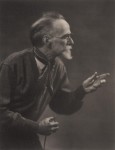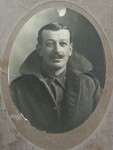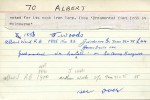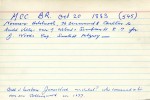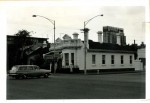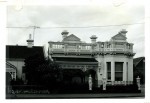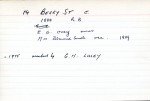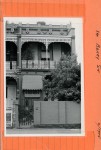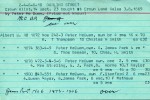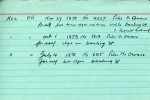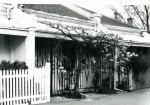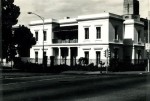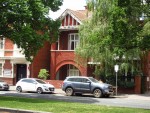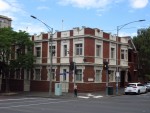Smith
176 Wellington Parade, Certificate of Title
Certificate of Title for 176 Wellington Parade. Traces owners from Bland Holt in 1904 back to Joseph Richardson Tuckett in 1883.
- 3833 reads
BROCKELBANK, Lilla
Lilla Brockebank, cricketer and architect, was the fifth of the six daughters of Duncan Brockelbank, actuary and accountant, and his wife Bessy Jemima, née Westmore .[1] Lilla was born in Hackney, London in 1883.[2] The family left London for Australia in August 1885 aboard the Melbourne. A month into the journey Duncan died of consumption.[3]
- 3112 reads
Dr Julian Smith: surgeon and photographer
One of East Melbourne’s more notable residents was Dr Julian Smith: a remarkable man, famous in two very different fields, surgery and photography. Born in England in 1873, he arrived in South Australia with his family three years later. He studied medicine at Adelaide University but had to transfer to Melbourne when all the instructing medical professionals resigned.
- Read more
- 2400 reads
DUNKLING, George Joseph
George Dunkling was a watchmaker, aged 38, when he enlisted on 13 April, 1918. He was married (1908) to Elizabeth, nee Bruce, in Sydney and they had one child, Nancy - later Mrs. L. Brennan.
- 7023 reads
East Melbourne, Albert Street 070 - Burchett
Date 1883. Norman Hitchcock built a 7 room villa for J Woods - owner.
(this could have been James Woods - architect - practising in Collingwood in 1877)
Occupied 1885 by James Travis.
Villa noted for cast iron lace ref. "Ornamental Cast Iron in Melbourne"
- 3679 reads
East Melbourne, Clarendon Street 002, 004, 006, 008, 010 - Burchett
1869c Peter McOwan built 5 cottages for self.
Occupants between 1872 and 1900:
Peter McOwan
T. Thompson
Charles H. Smith
James Park
Thos. Beeson
Mrs. Sterling
Horne
T. Naylor
Susan Naylor
F. Matthews
- 3183 reads
East Melbourne, Clarendon Street 206, Valetta House
A stucco-faced dwelling in a restrained version of the Regency style, remarkable for Palladian massing with two axes of symmetry and corner pavilions.
The house was erected by R. Jones for John Gray in 1856.The first we know about John Gray is his marriage to Eliza (nee Abrahams) the widow of William Pyke in 1853. Their first child was born at Myross, Saltwater River, now Maribyrnong River. (There is now a Myross Avenue in Ascot Vale).
East Melbourne, Clarendon Street 226, Rathmore
The house is double storey, asymmetrically planned and constructed of red brick. At ground floor level a single wide arch screens the verandah from the street. It is rendered with rough cast cement which merges with the balustrade of the balcony above. The roof over the balcony appears as a gable decorated with vertical timbers. It partially conceals the roof behind.
The house at 226 Clarendon Street was designed by H W & F B Tompkins in 1911 for Margaret Ethel Leslie (nee Stephenson) and built by W H Bullows.
East Melbourne, Clarendon Street 228, 230, Clarendon Flats
This two-storey building was designed as a block of six self-contained flats. It is constructed of red brick and forms an important part of the red brick group of 226, 224, 222 and 220 Clarendon Street.
On 9 Aug 1912 The Herald ran a short article stating that,



